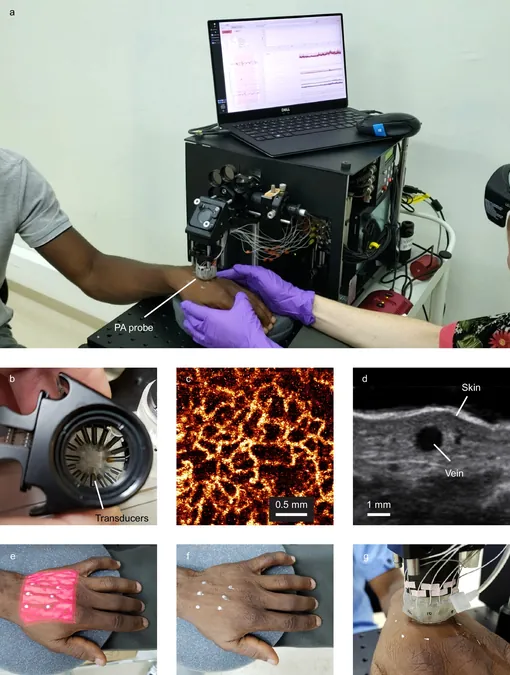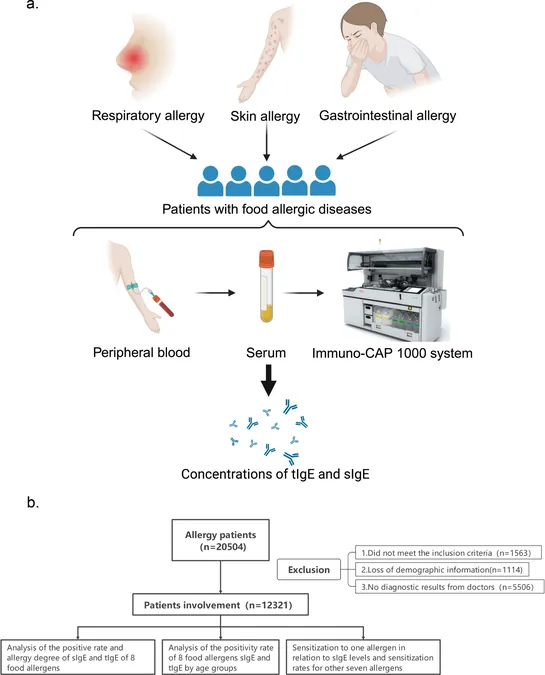
Revolutionary Noninvasive Malaria Test Paves the Way for Global Health Breakthrough!
2024-10-29
Author: Yu
Did you know that nearly half of the world’s population is at risk of malaria? Among the most vulnerable are children and pregnant women, who face the highest rates of severe illness and death from this devastating disease. Traditional methods for diagnosing malaria often rely on invasive blood tests, which come with numerous limitations, making effective testing challenging, especially in low- and middle-income nations suffering from rampant malaria infections.
Exciting new research from the Yale School of Public Health, published in Nature Communications, introduces a groundbreaking noninvasive testing method that promises to change the game in malaria diagnostics. Led by epidemiologist Dr. Sunil Parikh and a team from Cameroon and the University of Arkansas for Medical Sciences, this innovative approach could support global initiatives aimed at drastically reducing malaria cases worldwide.
A Game-Changer: No Blood Needed!
What sets this new malaria test apart? It requires no blood draw whatsoever! Utilizing a revolutionary device known as the Cytophone, the test employs precise lasers and ultrasound technology to identify malaria-infected red blood cells circulating in a patient’s bloodstream. According to Jillian N. Armstrong, a lead author on the study and former Ph.D. student in Parikh’s lab, the Cytophone is about the size of a tabletop printer and can produce results in mere minutes with a simple noninvasive probe positioned on the back of a person's hand.
The Secret Behind the Magic: Shimmering Crystals
The Cytophone operates based on the unique properties of hemozoin—an iron crystal that accumulates in red blood cells infected with malaria parasites. When these crystals are exposed to laser light, they absorb heat and exhibit distinct magnetic and optical characteristics, making them detectable by the Cytophone probe.
In trials conducted with 20 adult patients in Cameroon diagnosed with symptomatic malaria, the Cytophone achieved a sensitivity of 90% and specificity of 69%. This performance is comparable to, and in some cases superior to, traditional malaria testing methods, which often involve drawing blood.
A Collaborative Effort
The Cytophone was originally conceptualized by bioengineer Vladimir P. Zharov, who led a team from the University of Arkansas that developed the technology to detect melanoma cells. His collaboration with Parikh and their Cameroonian partners was crucial, especially during the COVID-19 pandemic when testing protocols had to adjust to new realities.
Professor Yap Boum II, the director of the Medicine Sans Frontiers Epicenter in Yaoundé, Cameroon, played a vital role in the project, ensuring continual testing and development of the device under challenging circumstances.
Looking to the Future
As the research team refines the Cytophone, they're looking to enhance its sensitivity and develop a battery-powered version, potentially changing the landscape of malaria testing forever. Dr. Parikh, who has dedicated over twenty years to malaria research in Africa, eagerly anticipates the next steps in this remarkable project.
Conclusion: A New Hope in the Fight Against Malaria
This innovative, noninvasive malaria test could be a significant leap forward in global health efforts, especially in regions hardest hit by malaria. With the potential to streamline testing while minimizing discomfort for patients, the Cytophone might just be the weapon needed in the ongoing battle against one of humanity's deadliest foes. Will this revolutionary test lead us towards a malaria-free future? The world is watching!


 Brasil (PT)
Brasil (PT)
 Canada (EN)
Canada (EN)
 Chile (ES)
Chile (ES)
 España (ES)
España (ES)
 France (FR)
France (FR)
 Hong Kong (EN)
Hong Kong (EN)
 Italia (IT)
Italia (IT)
 日本 (JA)
日本 (JA)
 Magyarország (HU)
Magyarország (HU)
 Norge (NO)
Norge (NO)
 Polska (PL)
Polska (PL)
 Schweiz (DE)
Schweiz (DE)
 Singapore (EN)
Singapore (EN)
 Sverige (SV)
Sverige (SV)
 Suomi (FI)
Suomi (FI)
 Türkiye (TR)
Türkiye (TR)